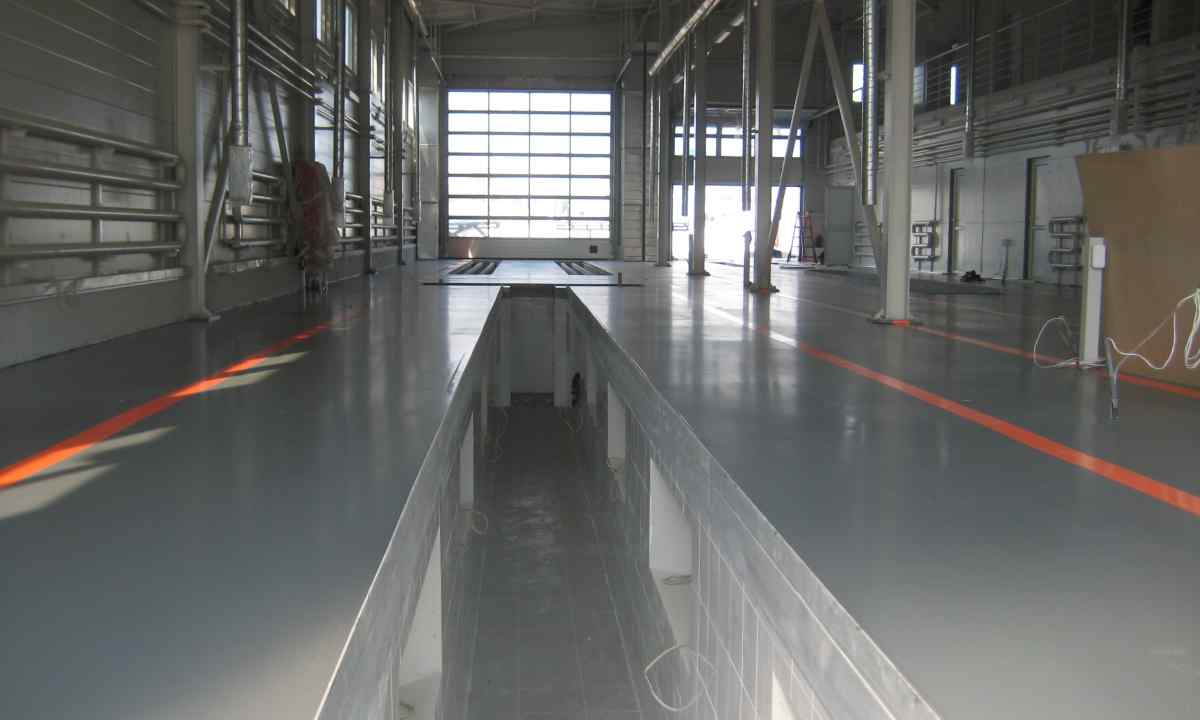Bulk floor represents special solution which forms ideally smooth and plain surface. This covering is characterized by high durability and durability, it does not incorporate toxic ingredients, is decorated by any facing materials. Bulk floors are used very widely – in inhabited, office, trade, industrial, warehouse, exhibition and transport premises.
Types of bulk floors as binding substance
Distinguish the following types of bulk floors as binding substance:
- epoxy (on the basis of epoxy resins); - polyurethane (on the basis of polyurethane);
- epoxy and urethane (the combined structure); - methylmethacrylate (on the basis of methylmethacrylate pitches);
- cement and acrylic (dry mix is applied to preparation). Epoxy floors differ in the high hardness, rigidity and durability. They are resistant to chemical influence, moisture and mechanical loadings. Temperature range of operation is from 0 to +50 °. Main applications of epoxy floors: pharmaceutical, by-product recovery and food production facilities, warehouse and utility rooms and also shops where large amount of liquid – for example is used, car washes. Also this type of floors is suitable for educational rooms, healthcare institutions and public catering. Epoxy floors are easily cleaned by any cleaning agent.
Lack of epoxy floors is rather low elasticity.
Polyurethane bulk floors differ in the greatest elasticity, resistance to vibrations, blows and abrasion. Besides, they are resistant to effect of chemicals, to temperature drops, can be operated at low temperature. Polyurethane floors are applied in shops of food productions, machine-building and mechanical shops, agricultural objects, warehouse, trade, refrigerating, exhibition office and premises. At filling stage the surface of this material can be decorated with color parts of acrylic paint therefore the floor which is externally reminding natural stone turns out. Epoxy and urethane bulk floors combine elasticity of polyurethane materials and rigidity/hardness of epoxy floors. Application of this option is reasonable in garages, on parking, in waiting spaces of stations, the airports, on platforms of transport objects of high flow capacity (the airports, the subway, stations, etc.). The methylmethacrylate type of covering quickly enough grabs (during 1–2 h after filling), it is resistant to average chemical and mechanical loads. It can be used at very low temperatures, its use in refrigeration chambers is recommended. The methylmethacrylate leveling weight is characterized by peracute smell, and therefore at the device of this type of covering the good ventilation is necessary. Cement and acrylic solution turns out as a result of mixing of quartz filler and also solution of polyacrylic polymer. This type of bulk floors in finished form is resistant to long influence of cold and hot water. The compounding of structure is suitable for use in food and light industry where large amount of water – meat and fish production, breweries, the linen industry, car washes, pools and saunas is applied. Besides, cement and acrylic floors differ in antiskid effect. The term of their service reaches 30 years.
Cement and acrylic floor has good oils, fats, acids resistance, to disinfecting and cleaning agents.
Besides, there are polimerbetonny coverings which cornerstone cement, polymeric additives, dyes and sand are. Thanks to linking of polymer and cement polymeric concrete floors – the strongest, anti-static, hygienic, resistant to mechanical influences, not hydroscopic, dust-free, have high decorative potential.
Technology of mounting of bulk floor
Mounting work of bulk floor consists of several stages. That the result has pleased you with quality and long life cycle, it is necessary to observe strictly all technology on each site of work. The first stage - preparation of concrete bed. Here the following requirements are imposed: - the quality class has to be not less than A M 200; - the concrete bed has to be equal; - humidity no more than 4%;-lack of chips and cracks; - availability of waterproofing for ensuring protection against underground waters; lack of dirt, dust, oil stains (hoovering and grinding is carried out by the milling machine). If the basis does not meet all these requirements, it is necessary to prepare new concrete tie. The following stage - priming of the basis with use of polymeric materials for strengthening of surface and also stronger coupling of the main covering with bulk. For this purpose use of single-component varnish which is applied with 2 layers is necessary. After end of this site of work the surface of floor has to have appearance of rough sandpaper. Puttying of surface is carried out to eliminate defects of the basis. The device of base course is used for elimination of defects and also overlapping of large time of surface. It is made of mix of quartz sand and bulk floor. Thickness of layer has to be 1.5-2 mm. Due to use of quartz sand, polymeric material is spent less. Penultimate stage - finishing bulk floor. By filling method apply with separate strips polymeric composition on base course. After that polymer is evenly distributed by means of putty knife (the tool for mounting) on all surface. For alignment of color and removal of the got air the put covering is rolled paint needle roller. The last stage of the device of bulk covering - sealing of joints. Movement joints need to be filled with special sealant.

